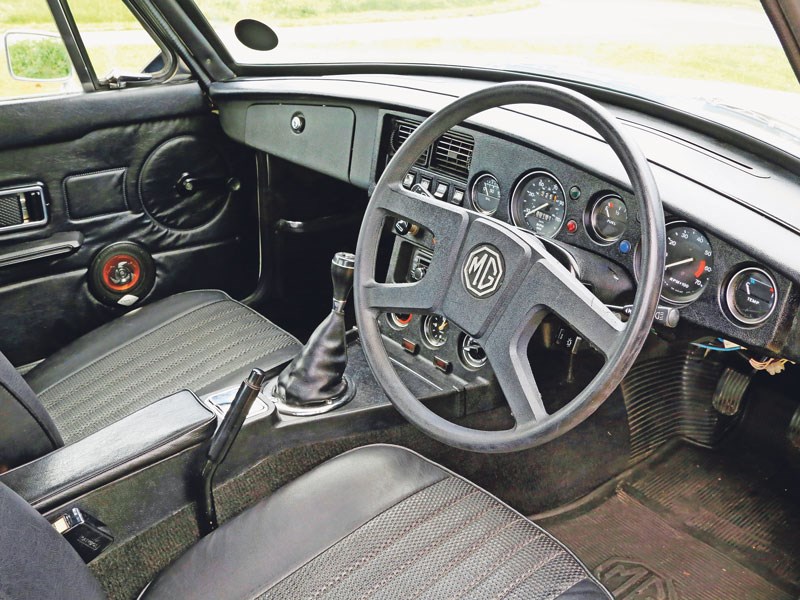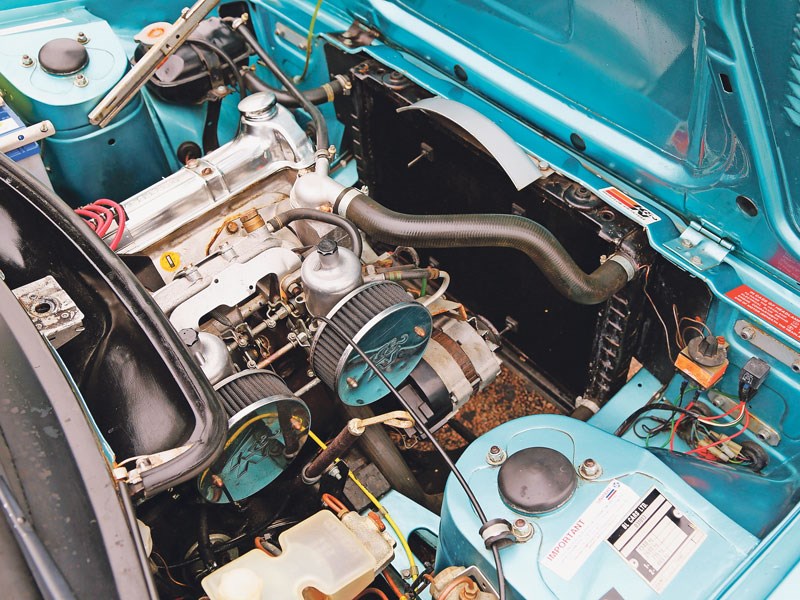The Triumph TR7 and MGB GT are both superb value and great to drive - but given the choice, which is the better buy?
Driving, savouring and analysing the fixed-head Triumph and late-model, rubber-bumpered MGB GT is a bit like spending a day listening attentively to all those Doctor Hook and Captain & Tennille singles that didn’t storm the charts when new, and even today, don’t exactly pulse out of your car radio. But give them a chance, ignore the dissenters and they’re still very good.
Both cars are from iconic manufacturers. The Triumph TR2-6 is held in deep esteem and the older MGs, including chrome-bumpered Bs, are still revered by classic fans. Yet while the convertible form of the Triumph TR7 is recognised as a highly desirable and practical classic, the more idiosyncratic fixed-head version of the TR7 is still overlooked by some.
There are more than enough clichés spouted about these cars. It is generally acknowledged that early, Speke-built Triumph TR7s weren’t the best quality sports cars ever made, but that conveniently forgets the massive quality improvements made to later TR7s. In the same way, pub bores rubbish the rubber-bumpered MGB introduced in 1974, usually without ever having driven one. Such poppycock spouted by the so-called purists means that, even today, either of these cars can be bought for £3500 in good condition. And that’s fantastic news for classic fans.
Honestly, both are great. Both will be rightly recognised there as card-carrying classics, but which is the absolute king of the underdogs?
Looks:
No one would ever confuse these two cars, even if they were wearing earplugs on the darkest of nights, and each offers a highly different driving experience.
With the passing of years, both cars are neatly and attractively styled. Let’s be honest, the rubbery bits enforced by US legislation don’t look bad on the MG, especially when viewed alongside period rivals, such as the ghastly Federal-spec Lancia Montecarlo.
The TR7 looks smaller and neater – and while some 1970s details can look tacky, the styling has aged well. Think of all those modern cars that now have a pronounced swage line and you’ll realise just how forward-thinking the TR6’s wedge-shaped successor was. Yet it’s the disdain for the two cars’ styling that has kept prices low. This really is no bad thing, because both are huge fun to drive.
On the road:
We’ll sample the MGB GT first. It’s a car you lower yourself into with care, and it immediately feels sporting, thanks to its crackle-black dashboard. The chunky four-spoke steering wheel, the reclined driving position and the view along the bonnet get you in the mood for competitive driving.
It’s all very workmanlike, but the seats offer plenty of support for drivers. Your legs seem to be able to stretch out forever in that vast canyon of a footwell, and the GT’s relatively high roofline means you won’t be brushing the headlining with your perm.
Turn the key and you’re definitely in sports car territory, with a wondrous engine note from the B-series, and purposeful throb from the exhaust.On the move, the four-pot feels torquey and the gearchange has a lovely, clicky feel. The car is rather low-geared, but this is put to good effect, with responsive mid-range acceleration.
In addition to the car having a reasonable amount of urge in the mid-range, the optional-fit overdrive makes for relatively relaxed cruising. The B is quite noisy overall, but not excessively so at constant speed – good if you like motorways.
The real delight is the handling. Get hold of one of the early rubber-bumpered MGB GTs and the raised suspension can feel a little spindly. But that’s not the case with this later car – put that down to the retro-fitted front and rear anti-roll bars, which really do tame the body roll and understeer. You could easily forget you’re sitting on a live axle and cart springs, thanks to perfectly-judged damping.
Steering is sharp and free from wander, but you pay for its directness with your biceps – it’s a heavy set-up. But overall, it is great, great fun at the wheel.
The TR7 is a very different beast. Entry into the car is a little more dignified and, once you’re inside, you’ll be surprised at the amount of space in the rather attractive cabin. The overall levels of comfort leave the MGB GT in the shade, and who could fail to love the tartan upholstery, seemingly inspired by the trousers of one Rupert Bear Esq?
Despite the obvious fact that this is strictly a two-seater, it’s a less sporting environment than the MGB GT. There’s an enormous and useful glovebox, and the instruments are housed in a large, oblong binnacle. It’s all very ergonomically laid out, although you get the impression it might have been crafted on a budget, and the driving position is excellent, with easily adjustable seats.
It’s rather a fun view down the bonnet, too. You could be in a Lotus here, with those pop-up headlamps rising at the touch of a button. When the TR7 was new, Triumph was keen to draw comparisons with similarly-snouted supercar brethren – the Ferrari BB, for instance – but there’s nothing intimidating in the way the TR7 drives.
The gearchange, shared with the Rover SD1, is lovely and has a smooth and slick change. The only bugbear is that the pedals seem a long way apart, which is another facet of this car that conspires to make it feel unsporting. You soon get used to this.
A lot of work must have gone into the suspension, as the ride is really good from the oh-so-simple independent front and beam rear axle set-up not unlike that of the MG.
The steering offers up plenty of communication, emphasising its neutral handling. There’s a feeling at low speeds that the rear of the car could be a little twitchy if pressed, but this turns out not to be the case, the car’s low centre of gravity surely making a contribution here. There isn’t quite the sporty feel of the MGB GT, but body roll is largely absent and the TR7 is certainly safe and predictable.
Neither car is going to catch you out in a nasty way. Both are actually rather forgiving, although the MG would be the first to give you a tap on the nose if you really tried to press it too hard.
Not surprisingly, the TR7 feels the more refined cruiser of the pair, as well as being good on low-end torque, but the MGB feels more flexible mid-range.
The braking on both cars is smooth and progressive, fine for normal driving, with those in the Triumph having a slight advantage over its rival, we’d say. In short, you’ll not go wrong with either.
So who wins?
If money were no object, we’d suggest buying both an MGB and a TR7 and driving them on alternate days. But as we need to choose an outright winner...
Like the Beatles, the MGB was a 1960s act whose classy components successfully lived on and prospered well into the 1970s and ‘80s. The TR7, on the other hand, has been unfairly associated with the decade that taste forgot, leaving it with more than a whiff of Afghan coats, patchouli oil, prog rock concept albums and jeans with ridiculous flares. This is unfortunate, because the TR7 is a great car, brimming with potential. Neither should Triumph’s advertising comparing the car to a bullet be followed by the phrase ‘in the head’
Though it feels slightly more saloon-like to sit in than the MGB, the TR7 handles really well. It’s very comfortable, has a spacious interior and boot, and has an immense and lovable character. It really is entertaining to drive and everyone loves those pop-up headlights.
The most bitter irony is that build quality of later TR7s was actually rather good, just at the point production ended. People also tend for forget just how many safety features these cars were given, from crumple zones to door bars.
I really don’t want to hurt the poor old MGB GT. So I won’t. I love the car and, in quantitative terms, it does nothing badly. For that reason alone, it has to be the easy winner.



